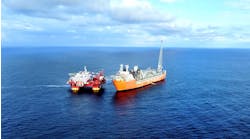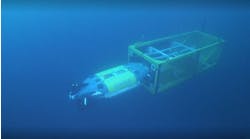The submarine telecommunications industry has deployed the core of the global fiber grid by setting up full duplex telecommunications solutions between continents. These solutions rely on fiber-optic cables, equipped with high reliability submerged repeaters, which are DC-powered through subsea cable from power feeding equipment in the shore stations.
This field-proven technology has already demonstrated the feasibility of power and data transport from a dry node to a dry node. It could also provide the ideal vehicle for power and data transport to subsea nodes in the offshore sector. Until now, the node for subsea access has not been available, but current progress on the Neptune Science observatory is rapidly closing this technology gap.
In October 2005, the University of Victoria in British Columbia awarded Alcatel-Lucent the contract for the infrastructure of the Neptune Canada Regional Cable Observatory. This is the first application of the new subsea concept. A number of locations in the northeast Pacific will be equipped with nodes bringing power and broadband connection to a range of scientific instruments.
The design is flexible and extendable through the use of branching units; the initial network (800 km [497 mi] and six nodes) could be extended up to 1,800 km (1,118 mi) and ten nodes. Neptune is due to go live early in 2008.
The observatory relies on three key systems, that together deliver the power and data to the subsea node:
- A 2.5 Gbit/s optical WDM transmission system from shore to the node
- An IP network, with sufficient precision for seismic monitoring, linking the subsea routers to shore
- A DC power distribution system.
All these components have been proven following rigorous system integration tests. A major achievement has been the development of the high reliability DC/DC converter, which steps down the 10 kV carried by the cable to 400 V.
DC/DC converter prototype.
The offshore industry has to cope increasingly with new field developments in greater water depths, farther offshore, and in more extreme environments. The current high market demand for production increases the pressure for quicker developments and enhanced reservoir recovery.
There is a growing need, therefore, to implement real-time remote offshore connectivity so that novel exploration and production schemes can be adopted for these new fields. In particular, all-electric control systems are ideal for remote control of subsea wells in hostile environments when no surface facilities can easily or economically be set up above the field. So there is a need for longer subsea tiebacks providing power and communications.
The technology demonstrated for Neptune should prove attractive for long subsea tiebacks. It offers flexible architectures that enable expandable, high reliability networks and intrinsic compatibility with e-field solutions relying on IP connectivity. Also, its capability of delivering 10 kW and 1 GigE is already available for ultra-long step-outs.





